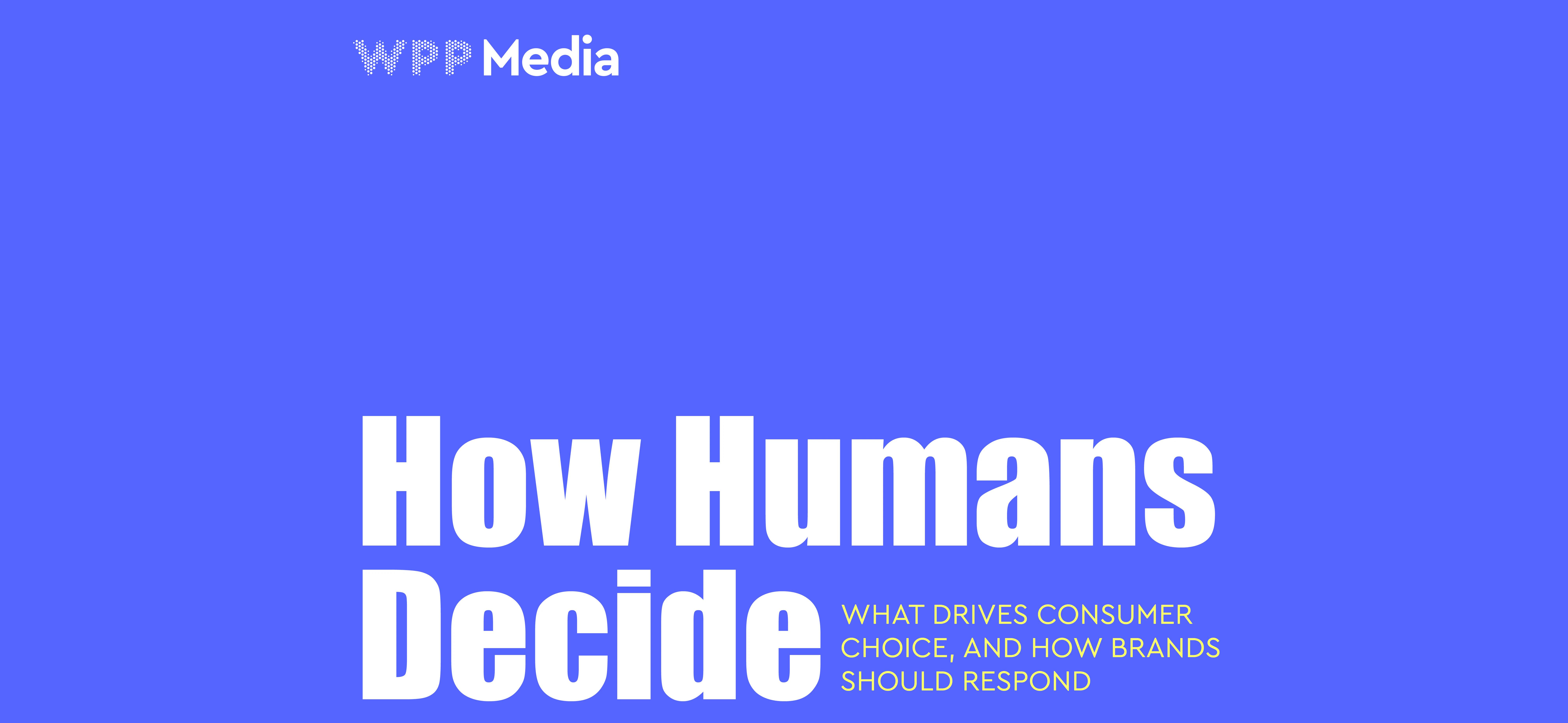Research28th Oct 2025•5 minute read
How Humans Decide: What drives consumer choice, and how should brands respond?
Real influencing of a sale requires a deeper understanding of how people really make choices - one that reflects the differences among consumers, categories and the channels marketers use to reach them.
Our definitive new study, ‘How Humans Decide’, draws on WPP Media's database of 1.2 million purchase journeys to elevate planning and investment across earned, shared, owned and paid (ESOP) channels.
In the study, produced in collaboration with the University of Oxford’s Saïd Business School, we set out to explore the specific factors that drive consumer choices and exactly how brands can influence those decisions. The report’s findings are essential reading for marketers and set the agenda for effective integrated marketing strategies.
The ways that different touchpoints impact consumers’ receptivity to brands depends on multiple factors, and the complexity of this principle has historically been overlooked. The universal ‘golden rules’ for media planning - like prioritising reach and attention - fail to account for the clear diversity across consumers, categories and channels.
‘How Humans Decide’ reveals the missing pieces from this marketing equation: influence, receptivity and touchpoint effectiveness. It drills down into the critical challenges facing brands today and examines how detailed, category-specific insights can power nuanced marketing strategies shaped by precision and context.
Key takeaways
Our study uncovered that, on average, 84% of purchases involve people choosing brands they’re already biased towards. This leaves just 16% of sales open to influence through lower-funnel marketing, making long-term brand building more crucial than ever.
Consumers also differ in their openness to marketing. We found that influencing a customer depends on how receptive they are to your brand, and the least receptive buyers make up a sizable 23% average of each category’s audience. These consumers are far tougher to influence, but priming them in the upper funnel makes them much less likely to choose a competitor later on.
Importantly, the study highlights that not all touchpoints are equally effective; their ability to shape brand perception and purchase decisions varies dramatically depending on context, category and consumer. While paid media builds brand, earned, shared and owned (ESO) touchpoints are significantly better at shaping purchase decisions, especially in the middle funnel.
How should brands recalibrate their marketing?
Prioritise long-term priming: invest consistently in developing consumer bias via brand-building investment.
Understand category-specific receptivity: tailor marketing strategies to consumer receptivity within individual categories by pinpointing where the category sits on the 'receptivity curve’.
Optimise for influence, not just reach: integrate influence as a core planning metric, recognising the power of ESO channels to convert the bias created by paid media.
To see your consumers’ purchase journeys in a whole new light, and discover how WPP Media data drives more effective integrated ESOP planning, click below to read the report.
